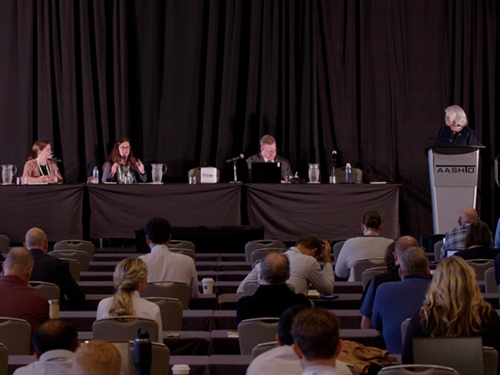A session at the American Association of State Highway and Transportation Officials 2025 Safety Summit and Peer Exchange in New Orleans explored how “purposeful planning” can integrate roadway infrastructure more efficiently and safely into communities large and small across the country.
[Above photo by AASHTO]
Jean Wallace – deputy commissioner and chief engineer for the Minnesota Department of Transportation and vice chair of the AASHTO Committee on Performance-Based Management – moderated the session’s three-person panel.
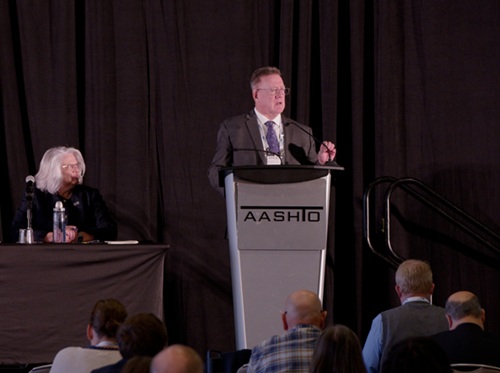
The panel featured Luana Broshears, planning and safety director for the Institute of Transportation Engineers (ITE); John Milton, director of transportation safety and systems analysis at the Washington State Department of Transportation and vice chair of the AASHTO Committee on Safety; and Breanna Kovach, group engineer for the Delaware Department of Transportation.
WSDOT’s Milton explained that safer land use planning addresses the interactions between properties; roads; facilities for walkers, bicyclists, transit; plus commercial and other vehicles.
“It is important to consider and plan where people live in relation to where they need to travel and how they will get there safely,” he said. “Land use planning provides for modal options. Creating ‘Home-Employment-Shopping’ proximity creates more options for people so they live near their daily destinations. That also results in fewer and shorter trips they need to take every day.”
In essence, Milton said public streets should reflect the land usage around them. “Infrastructure should match the purpose of the [roadway] corridor and the area’s priorities – such as industrial, commercial, or residential,” he stressed. “It comes down to offering more modal choice as shorter trips equals less exposure [to crashes]. That is why land use policies and development decisions play a foundational role where transportation safety outcomes are concerned.”
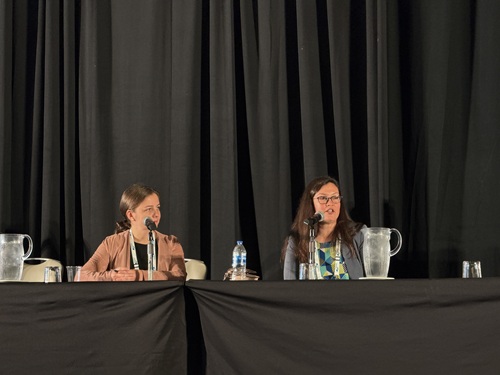
ITE’s Broshears said that also requires a “rethinking” of the functional classification of roadways as well.
“We need to create transit corridors, urban connectors, city hubs, main streets, local streets, and activity streets – moving away from a car-centric focus for roadway needs,” she noted.
“We need to start thinking about context-appropriate designs in a more multimodal way,” Broshears added. “That means, for example, focusing on sidewalk connections to transit hubs when building a new residential development. We need to think more about how people are using the space; not focusing on the needs of vehicles as much as the needs of people.”
Delaware DOT’s Kovach said private developers can play a key role in making such land use planning shifts. “Collaboration is key,” Kovach said. “We are a smaller state, so communication with developers in our case is a little easier. In our case, our coordination [role] helps them incorporate our ‘Complete Streets’ policy into their development plans; we give them a framework to lay all of this out.”
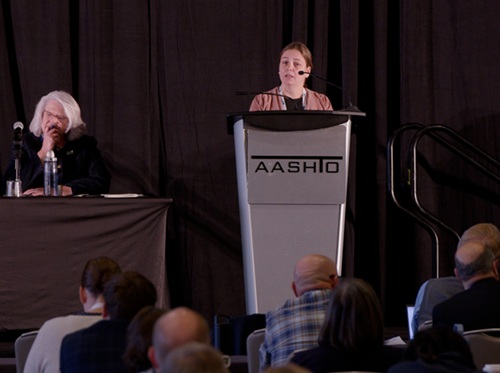
As an example of such a land use planning shift, she pointed to the Claymont Transportation Center; a facility opened two years ago as part of an economic revitalization effort.
“That realignment followed the closure of a steel plant; a shift from mix of industrial, commercial, and residential land use to one focused on more residential needs,” Kovach said. “Looking to revitalize the community, the key proved to be a new train station and transportation center – and, again, a private developer proved key to the process.”
She added that transitioning to this type of land-use focused philosophy does not happen overnight, especially with so much existing roadway infrastructure already constructed with more vehicle-focused metrics in mind.
“Even if different [modal] linkages are not there now, they could be in the future,” she explained. “It relates to the old question of how you eat an elephant: One bite at a time. It is the same with transportation; you can build in other modal options, such as transit or bicycle/pedestrian access, over time.”
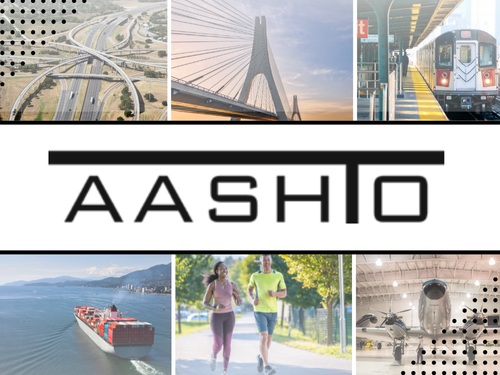 Nation
Nation
Registration Open for 2026 AASHTO Washington Briefing
December 12, 2025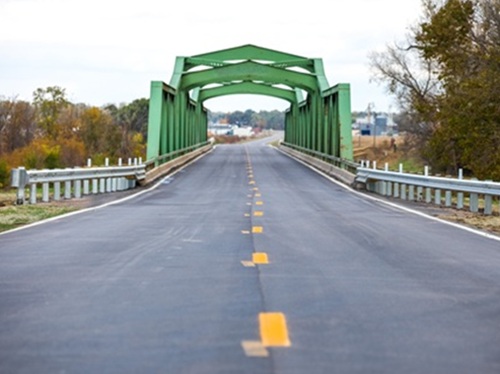 Nation
Nation
